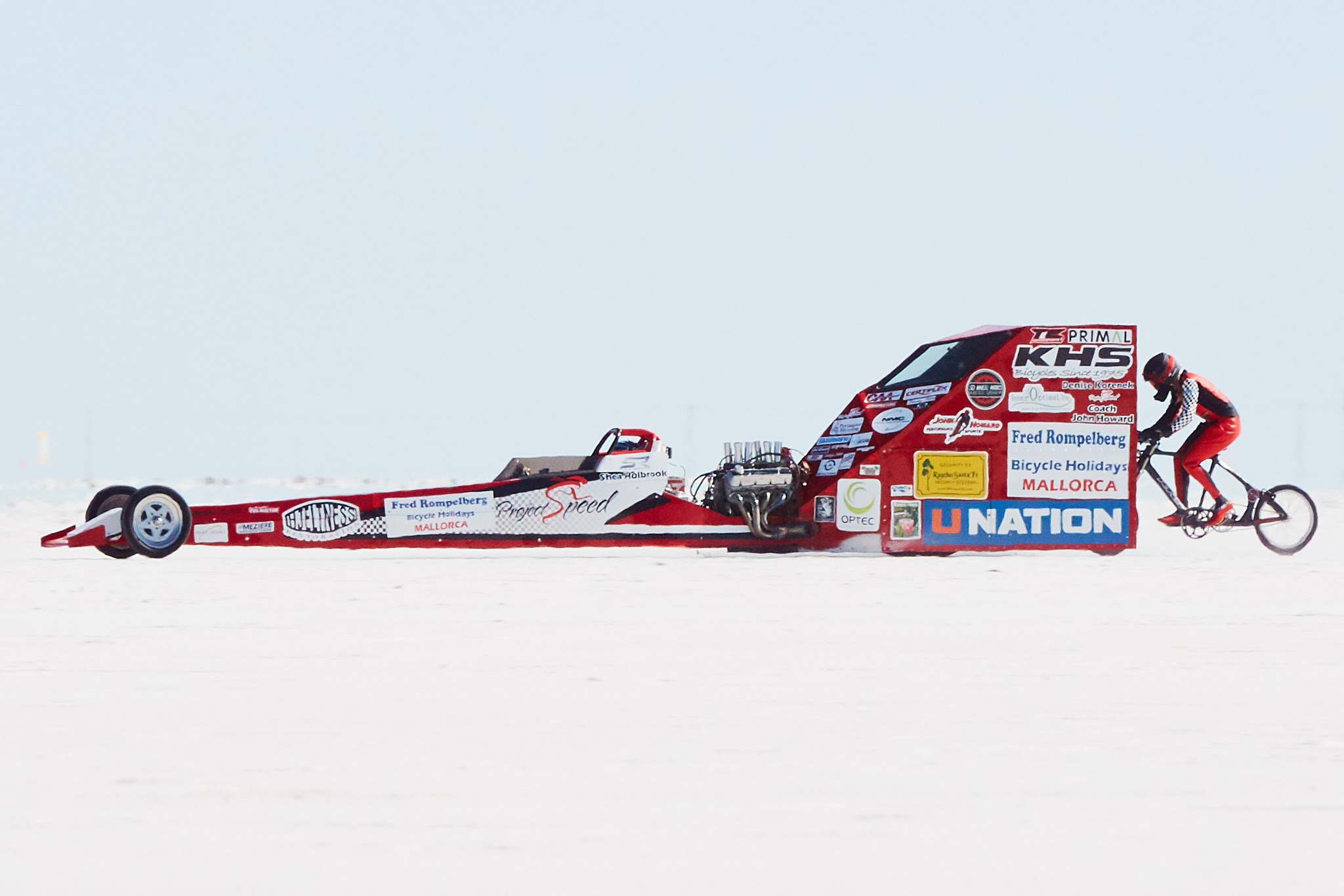When Denise Mueller-Korenek broke the paced bicycling speed record (183.932 mph!) and became the fastest human to ever ride a nonmotorized bicycle, she was following an optimized custom-built system to do so. This specifically designed system including custom made bicycles, a windbreaking vehicle, orchestrated training, real-time communications, and the famed Bonneville Salt Flats fast track, was the only way she could have broken the record.
Building a racing system
HF data network system
There are 4 critical components to an HF-based data link system:
- Modem - one on each side of a link, responsible for managing communications. The modem’s speed in transmitting and receiving messages is key to the overall latency performance.
- Antenna - must be optimal for the selected frequencies, as well as directional and provide good concentration of radio waves. Endurance is also a considered factor.
- Power Amplifier - amplifying the transmitted signal for best detection on the far end.
- Network management - dynamically reacting to changing HF conditions during a day and over seasons for extracting the best performance (throughput) and availability.

The market for HF equipment is small. Available off-the-shelf components were not originally designed for running data networks, let alone ultra-low latency ones.
Initially, Raft used off-the-shelf components, whatever could be found serving the defense market or ham radio enthusiasts. This brought us to a certain performance level. We learnt that using bigger standard antennas or more powerful standard amplifiers can get you so far, or so fast…
A complete system approach
To improve further, we needed to develop proprietary components and adopt a complete system approach, adjusted to the challenges of ultra-low latency.
Redesigning the system as we have a few years ago and adopting a blank sheet approach, challenged the conventual communication methods used for HF radio. In order to shave off microseconds and optimize the communications flow, each component is being closely examined and every “use of time” that can be eliminated and replaced with other means or none at all, is taken out. Sometimes when making structural changes or taking something out, new problems arise, requiring yet again the development of proprietary solutions.
Following this approach takes time, as design and development of system components involve hardware and proprietary production, as well as testing time for identifying new problems and solving them… without increasing latency or reducing performance.
The modem being the key component, was the first thing we took in for proprietary development from scratch – hardware, and software. We also defined special specs for antennas and power amplifiers to work optimally with Raft’s modem. Coupled with procedures and automation for managing HF links, we achieved a cohesive system whereby every version release involves an orchestrated update of the key components.
The way forward, for breaking the records again would be the same way Denise would probably take, finding improvements to make in our custom-built system so in the future we can look at old speed records and consider them slow.




